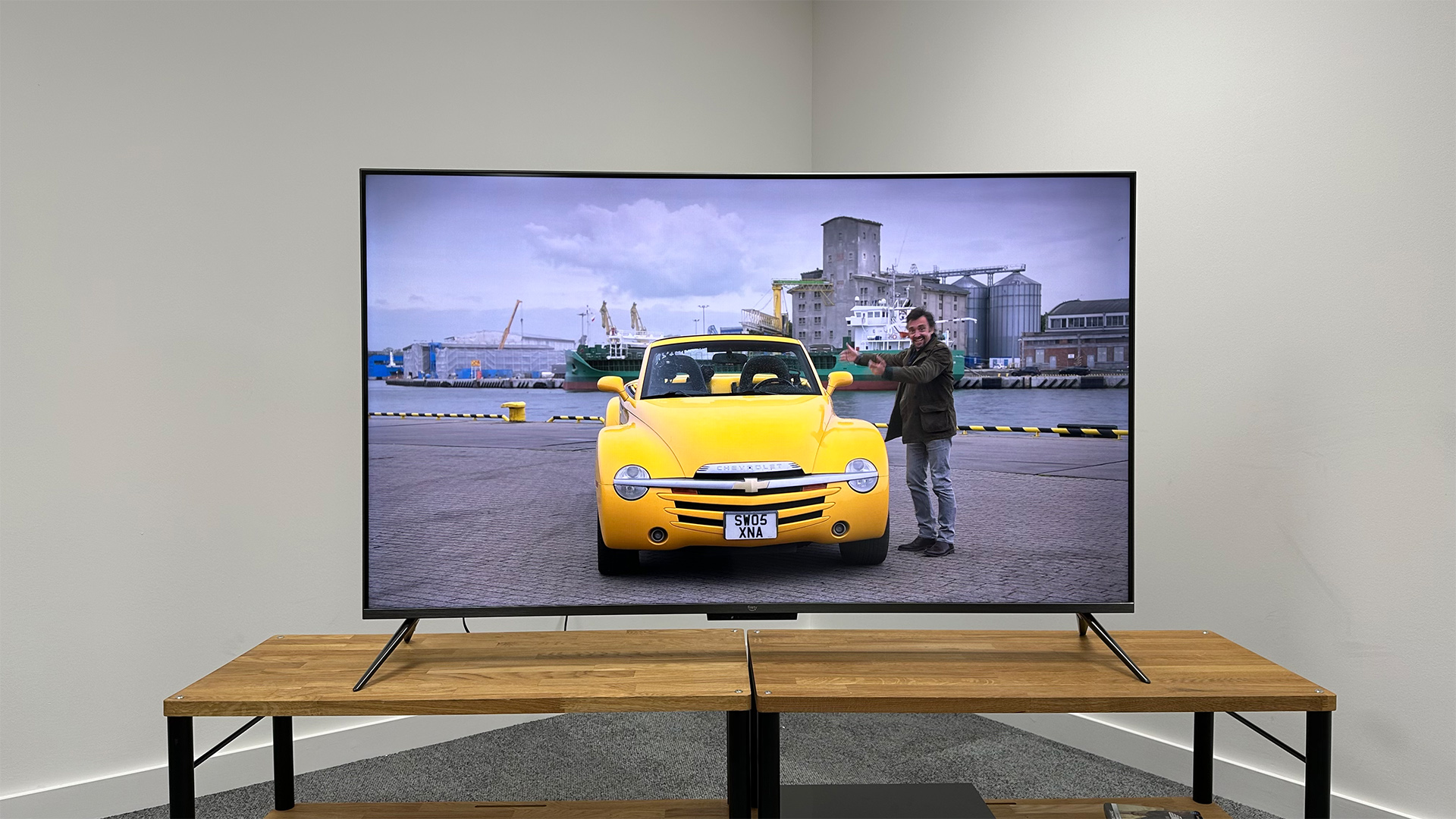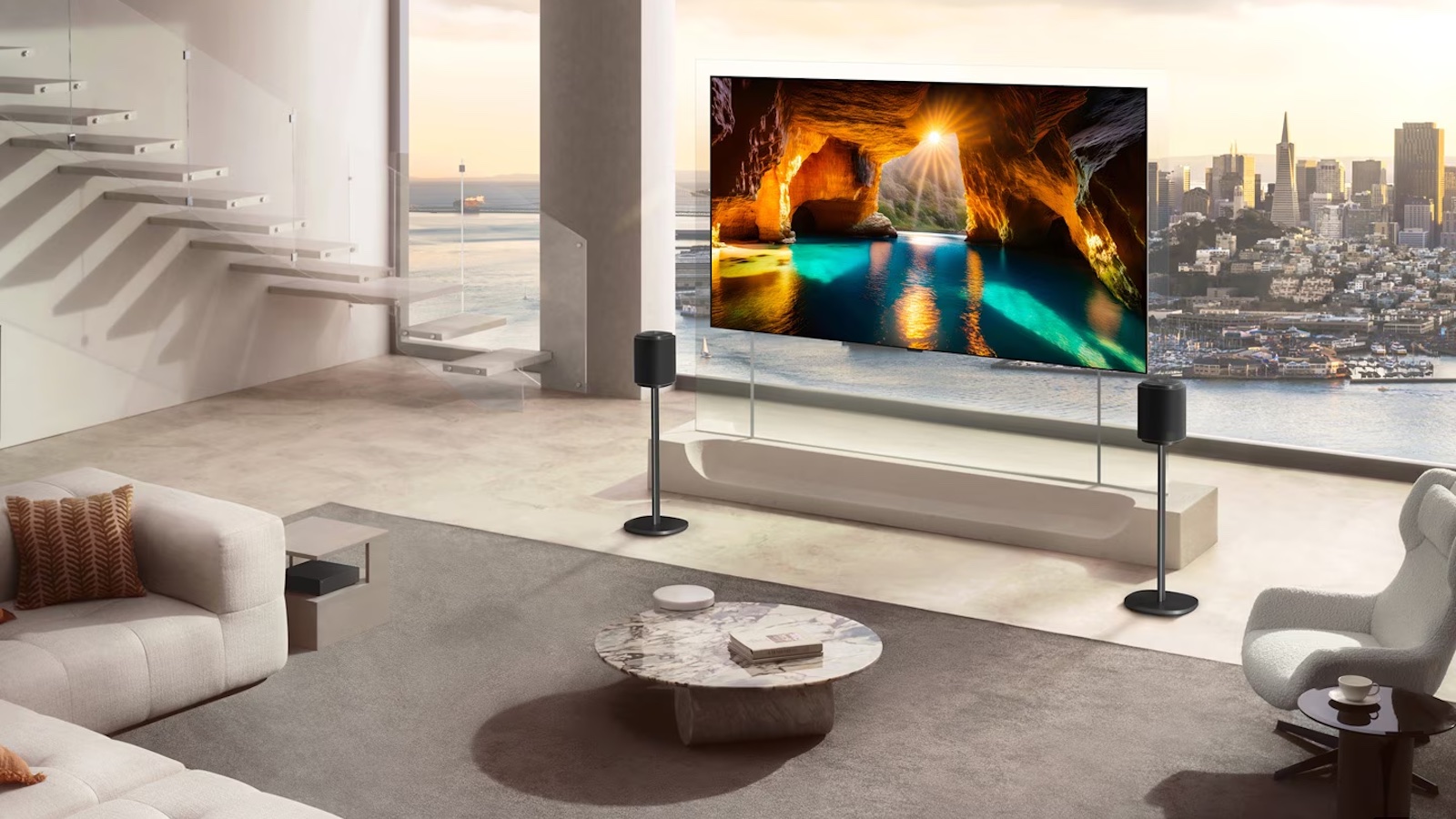What Hi-Fi? Verdict
While clearly not up there with flagship TVs from premium brands, the Omni QLED delivers better picture, sound and features than the price suggests
Pros
- +
Consistent, balanced picture performance
- +
Strong features for the money
- +
Clear sound
Cons
- -
Slight lack of detail, particularly in shadows
- -
Occasionally smeary motion
Why you can trust What Hi-Fi?
Amazon Fire TV devices are really popular. Like, seriously popular – to the tune of more than 200 million of them having been sold worldwide. Amazon must anticipate that sales will eventually slow down, though, as more people become owners of TVs that are already smart and therefore don’t need a Fire Stick jammed into their HDMI sockets. That is presumably why the company has finally decided to cut out the middleman and produce its own range of TVs with the Fire OS platform built in.
Top of that range is the Omni QLED, which we have before us today in its 65-inch guise. As you would probably expect, while this is a flagship product for Amazon, it’s still very much a value-oriented proposition. What you might not expect is that it's really rather good, both in terms of performance and features.
Price

The 65-inch version of the Amazon Omni QLED (QL65F601 to its friends) is officially priced at £1000 / $800 (around AU$1920 in Australia, where Amazon’s TV range is yet to be launched), but you probably won’t have to pay that much for it. The price has already dropped and then risen again a number of times, and Amazon loves to offer big deals on its own devices around events such as Prime Day and Black Friday. Be patient, and a discount of 25 per cent or so shouldn’t be too hard to get.
For reference, Samsung’s 2023 QLED range starts at £1299 / $1000 for a 65-inch model.
Design
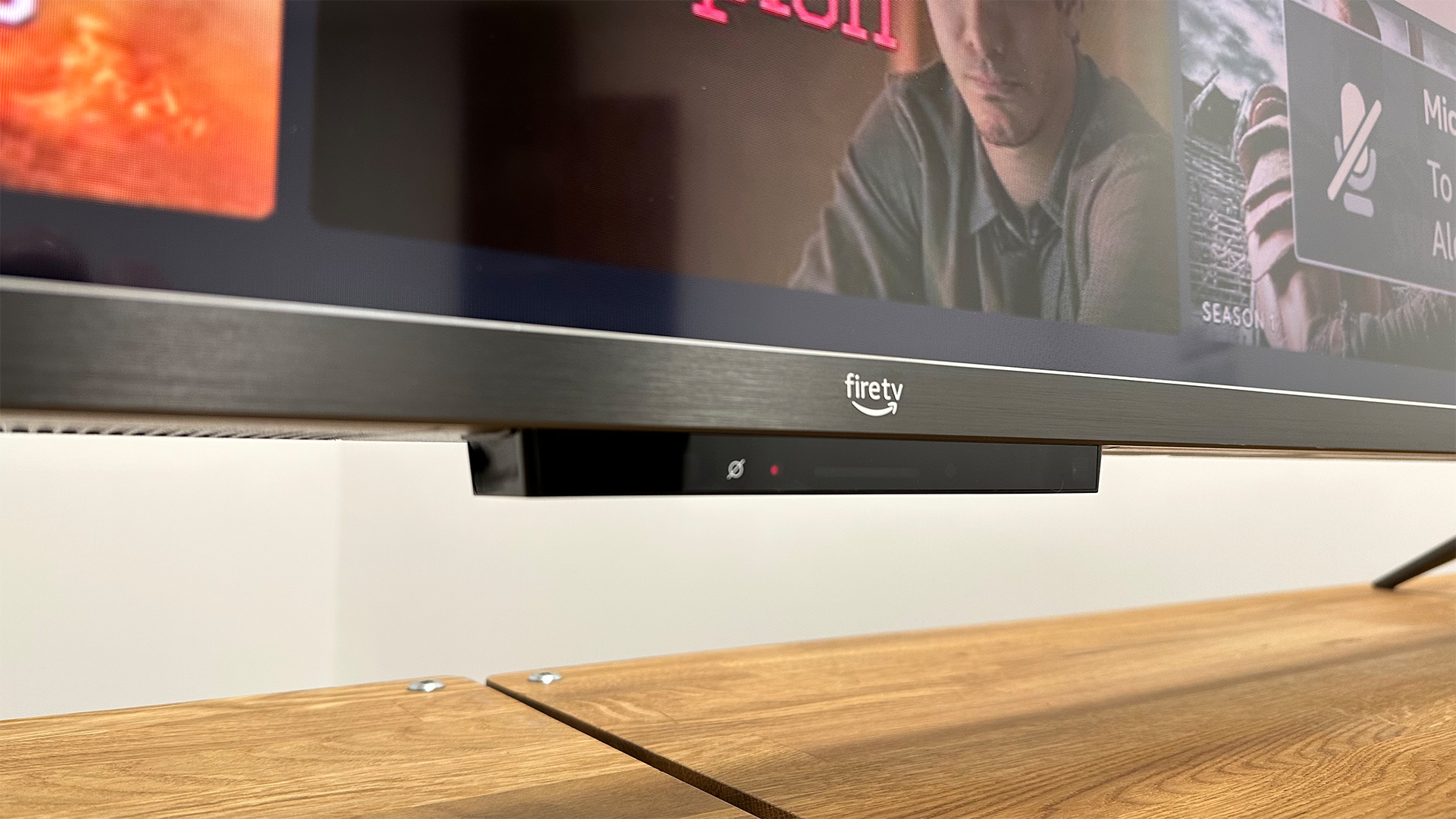
Unsurprisingly, the Amazon Fire TV Omni QLED doesn't feature the sort of craftsmanship or ultra-modern design of the latest Samsung or LG TVs, but this is far from an ugly television. Its silver plastic and metal construction looks pretty smart, particularly from across a room, and the colour-matched feet keep things simple and clean. It features moderately slim bezels around the screen and a small housing for the far-field microphones and ambient light sensor on the bottom bezel.
Unfortunately, the feet can be positioned only at the extremes of the set’s bottom edge, resulting in a footprint that will be far too wide for a lot of TV stands. We appreciate that this leaves quite a lot of space for a soundbar, but a second, narrower option for the feet would have been nice.
Features
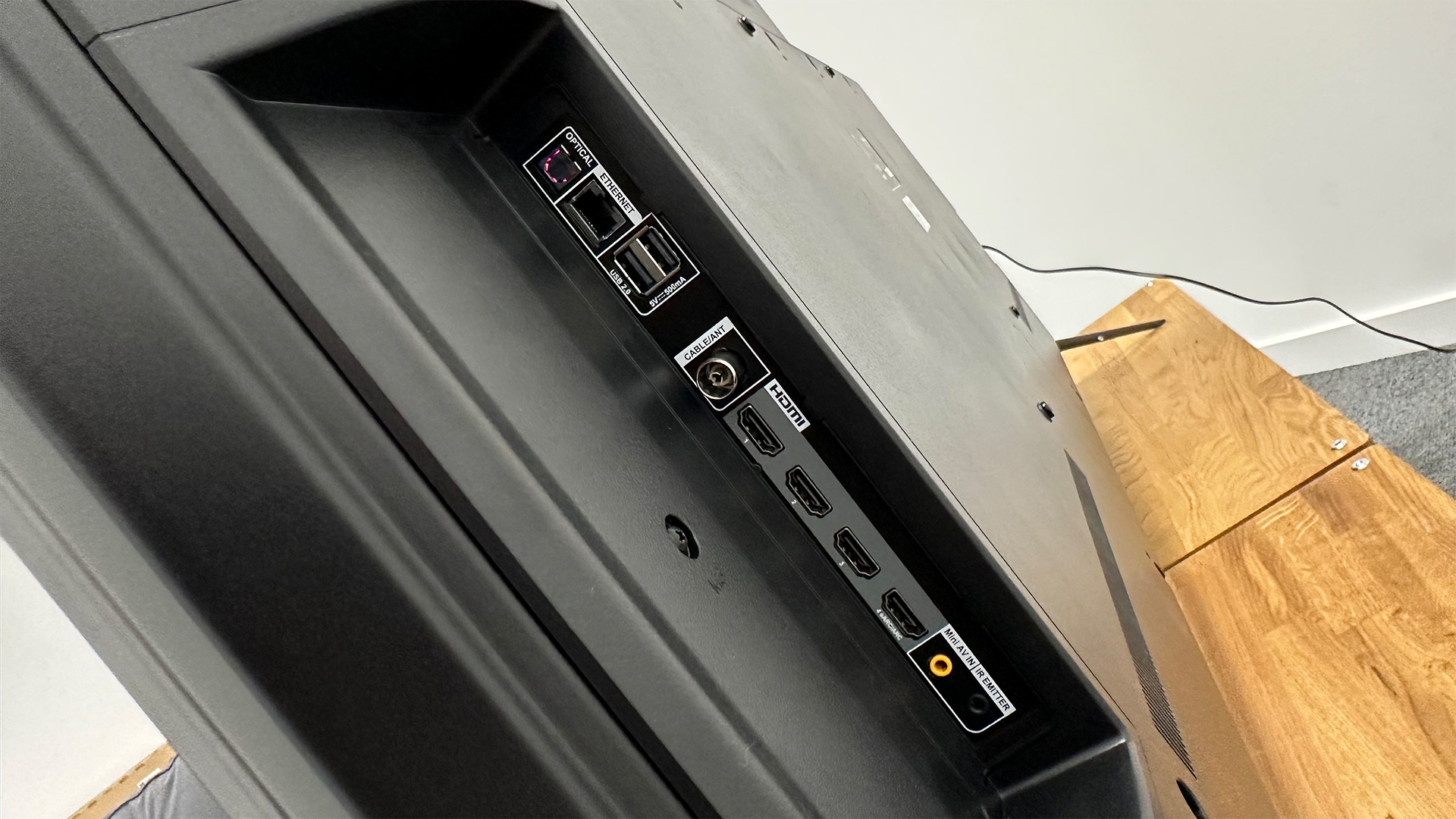
Core to the Omni QLED’s offering is the fact that it has all of the functionality of a Fire TV Stick built-in. That means you get a very intuitive user experience and a home screen that’s absolutely packed with apps, from the usual suspects such as Netflix, Disney+, Apple TV and, of course, Prime Video, to slightly less common fare such as Now and BT Sport in the UK. There are catch-up apps for all of the UK’s terrestrial channels, too, and a proper Freeview tuner for those who prefer to watch their TV the old-fashioned way.
The latest hi-fi, home cinema and tech news, reviews, buying advice and deals, direct to your inbox.
Thanks to the Omni QLED’s support for all current HDR standards (HLG, HDR10, HDR10+ and Dolby Vision), all apps deliver their HDR content in the way that they should. And, in fact, the TV supports HDR10+ Adaptive and Dolby Vision IQ, official versions of each format that automatically adjust according to the brightness and hue of the ambient light in a room.
As you might expect, Amazon's Alexa voice assistant is also heavily baked into the system's software and hardware, and you can navigate the entire operating system using voice commands via the included Alexa Voice Remote or the far-field microphones on the TV itself. These microphones can, though, be turned off entirely, via a physical switch on the underside of the TV. If there’s a red light on the TV’s undercarriage, it’s not listening.
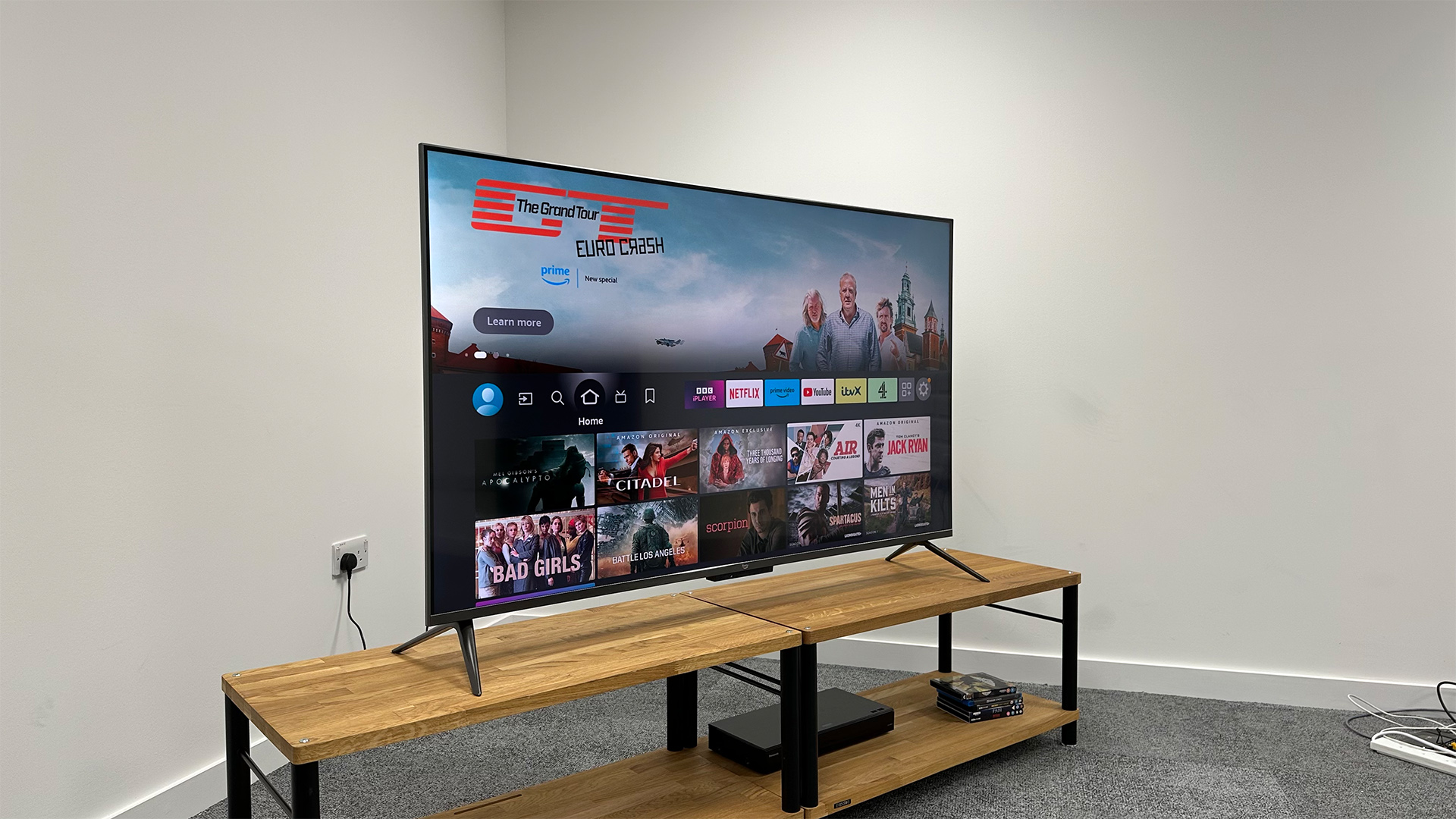
Screen size 65 inches (also available in 43in, 50in, 55in, 75in)
Type QLED
Backlight Full-Array LED
Resolution 4K
HDR formats supported HLG, HDR10, HDR10+, Dolby Vision
Operating system Fire OS
HDMI inputs x4
Gaming features VRR, ALLM, Dolby Vision game mode
ARC/eARC eARC
Optical output? Yes
Dimensions (hwd, without stand) 85 x 145 x 8.7cm
Amazon is also keen on using its Fire OS software to make the Omni QLED useful even when you aren't using it. A new feature called ‘Ambient Experience’ is a sort of glorified interactive screensaver paired with a sensor that detects when you are in the TV's presence. Amazon includes a plethora of different screensaver image options to cycle through, as well as widgets for reminders, smart home controls and personalised content suggestions.
In terms of core picture hardware, the Omni TV is surprisingly well appointed. It’s a QLED TV, as the name suggests, which means it uses Quantum Dots in order to produce its colours, but it also has a full-array LED backlight with 80 independent dimming zones. That’s the same number of zones as the Sony X90L – a TV that will set you back £1799 / $1500 at 65 inches.
Another surprise is just how well-specified the Omni QLED is for gaming. The panel has a refresh rate of just 60Hz, so 120Hz gaming is off the menu, but ALLM and VRR are supported, and there’s even a Dolby Vision game mode, which is something that Sony doesn’t offer on any of its TVs (at least until the A95L hits shops). We measured input lag at under 11ms, which is very fast for any TV, let alone one at the affordable end of the spectrum.
Amazon states that one of the Omni QLED’s four HDMI sockets is an HDMI 2.1, but this appears to be only because it handles eARC duties.
Picture

We kick proceedings off with Rogue One in Dolby Vision and quickly establish that the Dolby Vision Dark mode is too, well, dark, even in a pitch-black room, but that Dolby Vision Bright is just right. Okay, ‘just right’ might be pushing it slightly – this isn’t a performance in the same league as that offered by flagship sets from the big boys – but the quality and balance that have been achieved at this level is very impressive. This is evidently a TV that has been thoughtfully tuned rather than cobbled together.
Colours are vibrant and punchy when they need to be (on the tropical beaches of Scarif, for example), but subtle and pale when that is what’s called for (the interiors of the Imperial ships). Skin tones at times look just a little richer than is perhaps entirely true to life, but only marginally so, and they certainly don’t look unnatural when viewing the TV in isolation.
Some TVs at this level attempt to mask their affordable origins with lots of active processing that's designed to make each scene look more impactful. Such processing, however, often actually highlights those sets’ limitations, sacrificing black depth in order to boost highlights, for example, while in other scenes hobbling bright elements to make blacks deeper. The Omni QLED takes a much more consistent and considered approach to contrast that is less striking but significantly more watchable, particularly over the course of a movie. Its even-handed approach means you are less distracted by what the TV is doing and are therefore much more engrossed in the film.
It’s a generally similar story where detail and sharpness are concerned. In neither regard is the Omni QLED mind-blowing, but it delivers an image that is reasonably insightful and solid without veering into the realms of exaggeration.
Switching to Blade Runner 2049 in HDR10, we actually find the Film Dark mode to offer the best balance. It is brighter than Dolby Vision Dark, so is capable of delivering movies with a good degree of impact while remaining pretty true to the source material in terms of overall contrast and colour temperature.
The movie's introductory text provides a stern test for any backlit TV, particularly an affordable one, yet the Omni QLED acquits itself well. The white text means that some of the depth of the black background has to be sacrificed, but you certainly don’t get the greyness of which many budget sets fall foul, and there’s impressive evenness to the backlight, with no obvious blotchiness and only a mild brightening of the bars at the top and bottom of the screen when a bright object veers too close.
The Omni TV even looks decent off-axis. You do of course lose some contrast and colour vibrancy as you move out of its sweet spot, but that sweet spot is broader than is typical of affordable TVs, and the drop-off in quality less severe. That certainly helps its case as a big TV for a big family.
Inevitably, Amazon’s Omni QLED isn’t perfect. It doesn’t have the pure peak brightness to provide a dazzling rendition of the latest and greatest HDR movies, but that’s understandable at this level and, as mentioned, we appreciate the way the TV works within its limitations. However, while detail levels are decent, they could be better, even at this price. That deficit is exaggerated in darker images, where picture information is frequently lost to the shadows. Colours tend to take on a patchier consistency in these areas, too, most noticeably in skin tones.
Also, while motion is pretty smooth and mercifully free from the soap opera effect and fizzy artefacts (assuming you stick to mild or no motion processing), it can be a bit smeary at times, seemingly reducing complex backgrounds to blockier patterns that crawl across the screen. That probably makes it sound awful, which it isn’t, but it is one of those slight picture flaws that reveals that the Omni QLED is a budget TV after all.
Sound

Amazon has kept things simple on the audio front, avoiding the temptation to attempt fancy Dolby Atmos processing and the like, and once again we feel that is a wise decision. Yes, the sound is narrow and small in scale compared with that offered by more premium TVs – and there is no attempt to push sound outwards to the sides or up from the television’s chassis – but it is also direct and clear.
Balance appears to be the name of the game again: both the treble and bass have been rolled off a bit, resulting in little in the way of impact at either end of the tonal spectrum; but that also ensures it avoids harshness at the top and a lack of composure at the bottom, issues of which many very premium TVs are guilty.
Dynamically, it’s nothing to write home about. So, all told, the Omni TV isn’t going to blow you away with the latest blockbuster movie soundtrack; but neither will it annoy you, and there’s a lot to be said for that when dealing with relatively affordable kit. We would still, of course, recommend adding a soundbar to your basket – if you wait for the Omni TV to be discounted, you can spend the change on better sound.
Verdict
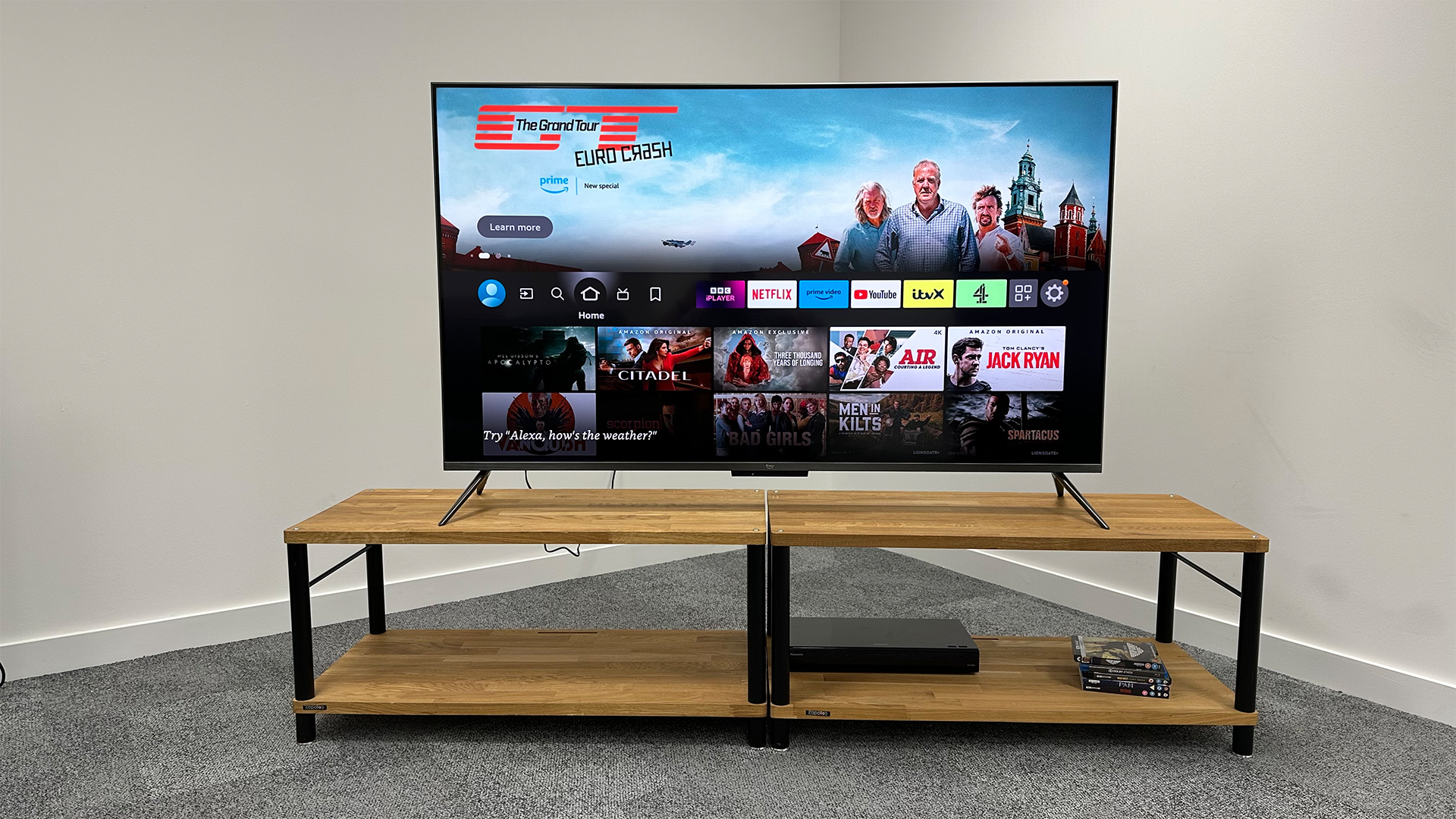
While the star rating might be exactly what you would expect for an Amazon TV, the way that it has achieved that rating is something of a surprise. The Omni QLED is clearly a TV that has been thoughtfully designed to deliver not just a better performance than you would expect at this level, but one that is balanced and consistent and rarely makes the set’s budget origins obvious.
It’s telling that members of our test team, who are spoiled on a daily basis by the latest OLED TVs, agreed that they would be happy to have the Omni QLED at home. There aren’t many TVs at this price that they would say that about.
SCORES
- Picture 4
- Sound 4
- Features 4
MORE:
Read our review of the Sony XR-55X90L
Also consider the Sky Glass
Read our LG OLED42C2 review
OLED vs QLED: which is the best TV technology?
Tom Parsons has been writing about TV, AV and hi-fi products (not to mention plenty of other 'gadgets' and even cars) for over 15 years. He began his career as What Hi-Fi?'s Staff Writer and is now the TV and AV Editor. In between, he worked as Reviews Editor and then Deputy Editor at Stuff, and over the years has had his work featured in publications such as T3, The Telegraph and Louder. He's also appeared on BBC News, BBC World Service, BBC Radio 4 and Sky Swipe. In his spare time Tom is a runner and gamer.
- Ketan BharadiaTechnical Editor
